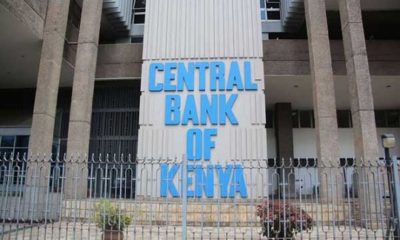Business
How Africa can Cut Impact of US Dollar on its Markets

Regardless of market conditions, the one topic I always end up discussing with clients and investors is currency markets.
There are frequently strong opinions expressed about why domestic policy direction or the price of key tradable goods or services leads to the strengthening or weakening of one’s home currency.
The discussion we don’t have enough of is the disproportionate impact of US Dollar movements on emerging market countries, and whether there is any way to reduce this over time.
While policy and trade are typically the primary drivers of major currencies, I frequently emphasize that currencies and their drivers are relative, rather than absolute.
As a result, any discussion of an economy’s policy or external balances is important, but primarily in relation to the policy or external balances of the economy’s major trade partners.
When it comes to the US Dollar, however, the impact is magnified because a large portion of global fuel and food is priced in US Dollars.
This was demonstrated in 2022, when the US Dollar appreciated significantly against the majority of global currencies.
The US Federal Reserve raised interest rates at a record pace to combat rising US inflation caused by global fuel and food price increases following Russia’s invasion of Ukraine.
The “double whammy” of higher US interest rates and accelerating global inflation caused major headaches for central banks around the world.
For most, the unpalatable options were to either raise interest rates faster than the US to support their currency, or to allow the currency to depreciate, making already expensive imports of food and fuel even more expensive.
Many countries implemented fuel or food subsidies to help their citizens, but this typically increased budget deficits, driving debt levels higher at a time when funding that debt had suddenly become much more difficult.
To make matters worse, most African countries continue to rely on US dollar-denominated debt to fund their economies.
According to UNCTAD, Africa’s external debt stock will have risen to $466 billion by mid-2022 due to bilateral borrowing, syndicated loans, and bonds.
As local currencies depreciate, dollar debt repayments become more expensive, putting more countries at risk of a future debt crisis.
This deluge of geopolitical and macroeconomic shocks has weighed heavily on many African currencies. It has resulted in the steepest currency depreciation as well as the highest inflation levels for net importers of fuel and food.
This macro backdrop, combined with erroneous governmental and central bank policy, has pushed some currencies to historic lows.
Countries that performed better typically share one of two characteristics. They are either net fuel exporters or have implemented quasi or actual capital controls to limit currency depreciation.
However, while restricting capital outflows may give a desperate Central Bank the illusion of control, it has two major negative consequences for the real economy.
One, importers’ access to US dollars becomes increasingly difficult. This results in the formation of a parallel FX market, the impossibility of obtaining essential imported goods, or both.
Nobody had heard about Sri Lanka’s financial problems until they ran out of dollars to buy fuel…
Two, existing investors seeking dividends and other benefits, as well as potential future investors, are discouraged from investing in that country for fear of being unable to repatriate capital.
With insufficient investment capital available to put to work, an economy’s long-term growth potential suffers.








